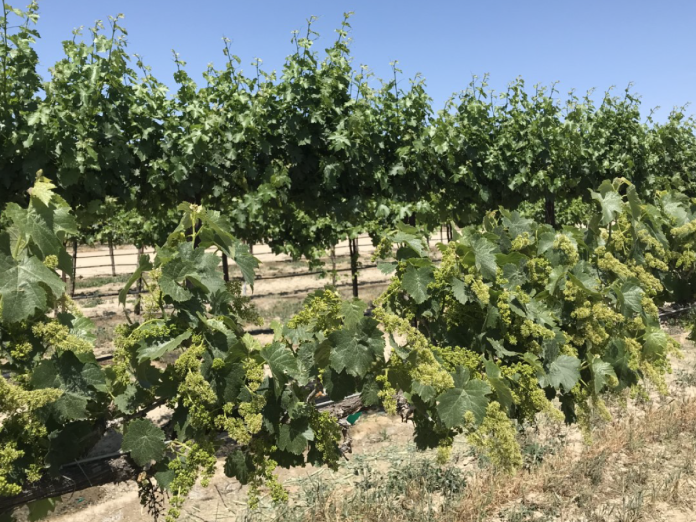
Smaller-than-normal canopies in wine grape vineyards are a common sight in the San Joaquin Valley this year due to lack of irrigation water.
George Zhuang, UCCE Fresno County viticulture advisor, said the dry winter and spring contributed to stunted growth and production issues growers are seeing in this year’s wine grape crop.
“In some varieties, we are seeing shatter in clusters and yield losses,” Zhuang said.
Postharvest irrigation is important every year to relieve water stress and help the vines store carbohydrates for next year’s production. This year, it is critical. The goal of postharvest irrigation is to avoid delayed, erratic bud break and ensure canopy growth the next growing season. It will also help with production and fruit quality, Zhuang said.
This year, securing enough water for postharvest irrigation may not be possible. Zhuang said growers and vineyard managers will have to decide if they want to apply water after harvest or save it for next spring. If the Valley experiences another dry winter, the water will help next year’s growth. Stressing the vines postharvest will have a carryover effect into the next year, he said.
If irrigation water is available postharvest, the goal is to maintain a photosynthetically functional canopy, but avoid overwatering to prevent vines from pushing new growth.
At least 10% of seasonal irrigation water should be applied postharvest. For early season wine grape varieties with a longer postharvest growth period, more water may be needed if hot temperatures persist. To ensure a more even bud break and an adequate carbohydrate reserve, irrigation, if possible, should continue until leaf senescence.
Adequate soil moisture postharvest and during dry winters will also hydrate vines, prepare them from cold hardiness and help with even budbreak the following season.
Fertilizer applications can be made in the fall to replace annual loss from harvest. It is important that the canopy is active to assimilate nitrogen applications. Early season varieties will have a longer period where this is possible.
Postharvest is a good time to apply soil amendments, including sulfur and gypsum, to adjust soil pH and improve infiltration.
If there is a positive to this year’s drought conditions, it is the lower pest and disease pressure in vineyards. This year, Zhuang said, there has been less fungal disease due to the smaller canopies. Vine mealybug has also declined in water stressed vineyards due to less vigor in the grapevines.

















